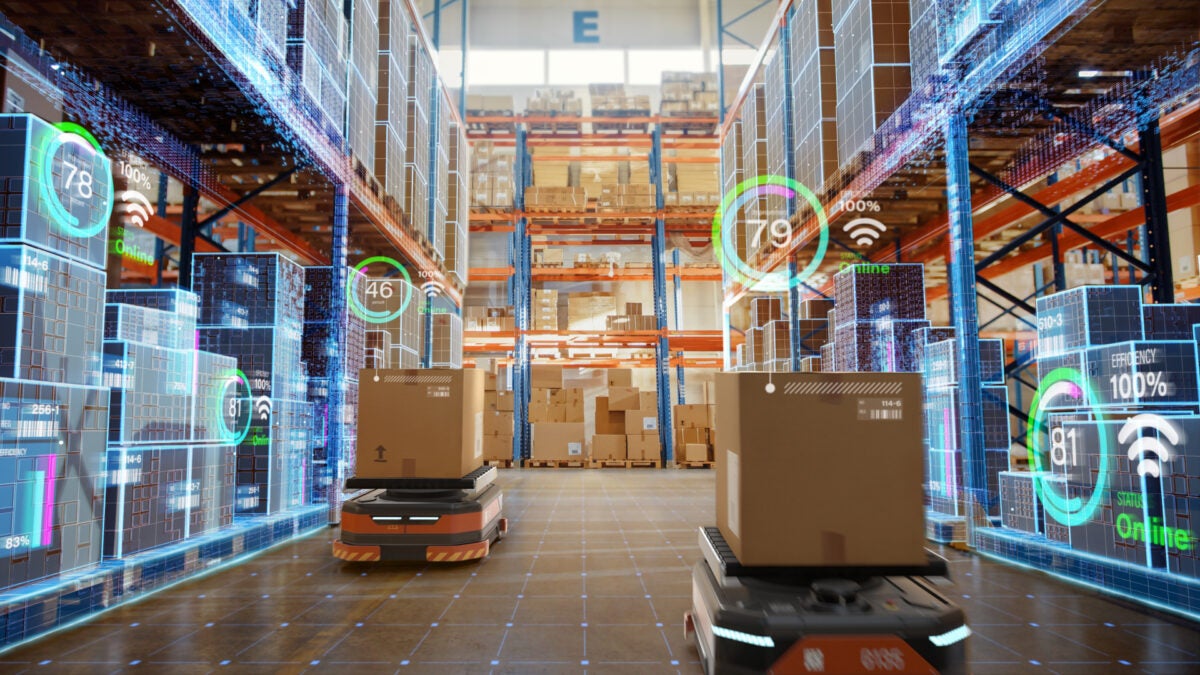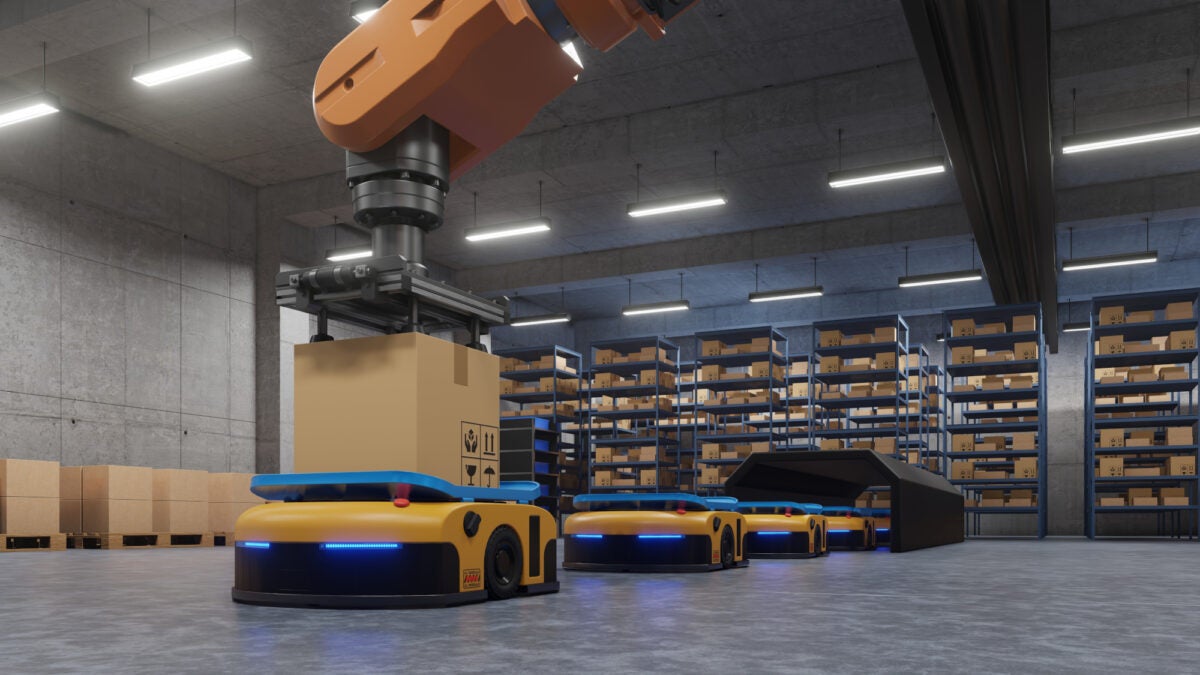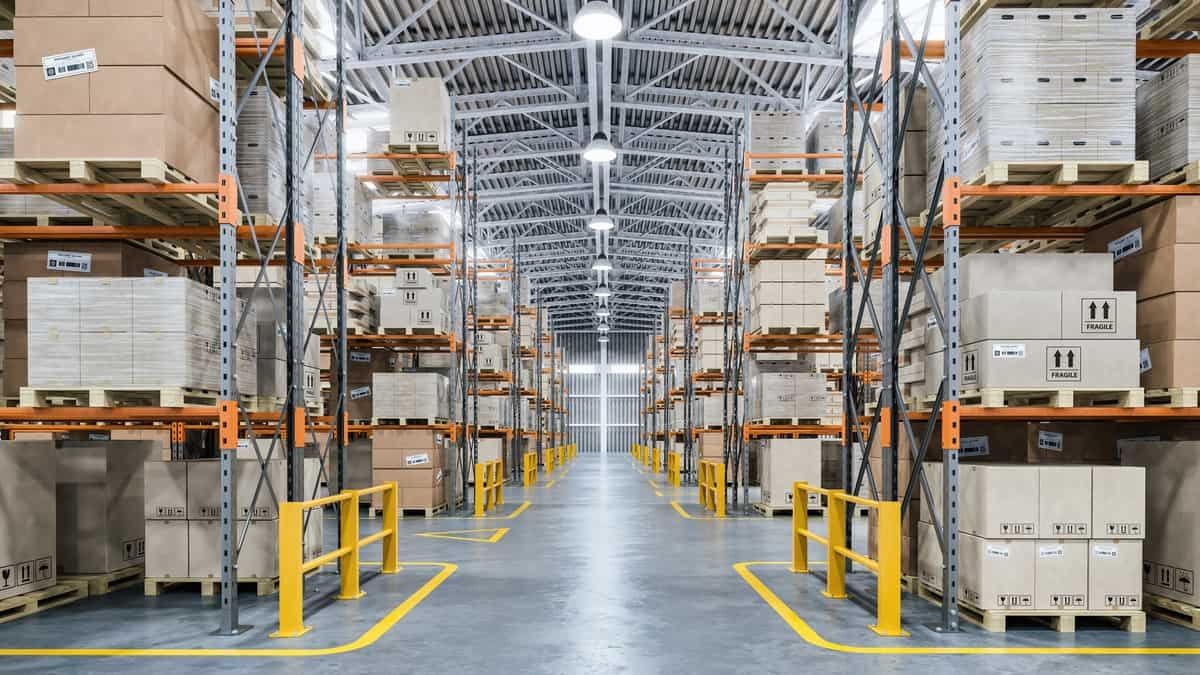With tasks such as picking, sorting, loading and unloading packages being automated more and more with the help of intelligent robots, the future of warehouse logistics could bring a lot more automation and a lot fewer humans.
Experts say the key to the supply chain warehouses and fulfillment centers of tomorrow could be an emerging technology known as multi-agent orchestration.
“When you look at multi-agent orchestration, what it does is it gives freedom for retailers to choose their own set of robotic technologies,” Akash Gupta, co-founder and CEO of robotics fulfillment firm GreyOrange Inc., told FreightWaves.
Multi-agent orchestration, also referred to as multi-robot orchestration, is a software that can integrate large and diverse fleets of mobile robots — even robots from different manufacturers — with the aim of creating a seamless warehouse/fulfillment center workflow.
GreyOrange’s GreyMatter is the company’s orchestration software platform, which robots can use to communicate with other robots and systems, enabling real-time coordination of warehouse operations.
“The whole purpose of multi-agent orchestration is not binding retailers to one particular solution or one particular type of technology because there are different types of fulfillment centers in different sectors,” Gupta said. “Some robotics solutions fit well for dark stores, different ones fit for omnichannel fulfillment centers, and there are places where you want two or three different technologies to kind of come together and get coordinated with each other, and the multi-agent orchestrator basically has all those feature sets.”
A recent Gartner report titled “Predicts 2023: Supply Chain Technology” said that over 50% of companies deploying autonomous mobile robots in their warehouses will have a multi-agent orchestration platform by 2026.
“There’s two components to the multi-agent orchestration platform — there’s the integration and there’s the orchestration,” Dwight Klappich, one of the report’s authors, told FreightWaves. “The orchestration is how do I coordinate the activities of maybe multiple things, not just sending a message to them.”
In the report, current users of workplace robotics were asked if they intended to expand their robot fleets; 86% of respondents said they do. Another 96% of current robotics users said they planned to expand their use of robotics to new tasks in the workplace.
Logistics expert Dr. Larry D. Parker Jr. also believes more automation is heading toward commercial transportation and logistics as supply chains shift.
The pandemic highlighted logistical strengths and weaknesses and the need for automation in supply chains, said Parker, American Public University System department chair in supply chain and logistics.
“As a company, you’ve squeezed every line out of your business, and it’s impacted by what we saw in the pandemic,” Parker said. “It brought everything to light where if you’re a viable business, you found ways to enhance the bottom line, which is logistics. How am I going to ensure I’m getting my products? How am I going to get the most out of the supply chain? The answer is automation, which has been impacting the supply chain for 10 years already, but the velocity is increasing and the consumer is now ready to embrace it.”

Multi-agent orchestration software revolutionizing robotics
Some of the first robots used in the workplace arrived at General Motors in 1962, when the automaker installed an industrial robot arm on a vehicle assembly production line.
The first warehouse robots also emerged in the early 1960s, with the introduction of automated storage and retrieval systems to the warehousing industry, according to GreyOrange.
According to the 2020 world robotics report by the International Federation of Robotics, there are around 2.7 million industrial robots in use worldwide, a number that is quickly growing.
While there are no exact figures for the total number of warehouse robots worldwide, e-commerce giant Amazon alone has more than 520,000 robotic units currently in use across its fulfillment and sortation centers.
Jonathan Morav, head of product and strategy at Fabric, said its customers are looking to automate their fulfillment strategies for a variety of reasons, including labor shortages or the need to meet customers’ rapid delivery expectations.
“We have customers come to Fabric for a variety of reasons, but no matter what prompts them to seek a robotics solution, the benefits they reap in turn are immense in terms of mitigating labor shortage struggles, optimizing efficient operations in smaller spaces and lessening delivery operations’ environmental footprint,” Morav said.
Tel Aviv, Israel-based Fabric is a retail technology company that provides intelligent robotic fulfillment systems. The company’s main U.S. office is in New York, with several others throughout the country. Fabric’s clients include traditional legacy grocers, as well as other retailers in the health and beauty space.
“We saw a massive uptick in e-commerce during the pandemic and as the world pivots back to in-person operations, brick-and-mortar retail stores are certainly competing with e-commerce brands,” Morav said.
Warehouse robotics has evolved with autonomous mobile robots (AMRs), machines that can assist warehouse associates with picking, moving loads and more. In the past couple of years, advanced sensors and artificial intelligence have been added to AMRs.
Klappich said warehouse robots in this context have a two-part system — the robot itself, which is for a specialized task, and the software that controls it.
The rise of e-commerce and customers’ expectations of faster shipments fueled more demand for warehouse automation. About five years ago, Gartner began seeing more customers ask about warehouse robots and the different jobs they can do throughout the logistics industry, Klappich said.
“Some of [Gartner’s] leading-edge customers saw what Amazon had done — so we started covering robots,” Klappich said. “What we started to see pretty quickly is once customers did one robot, they started looking around going, ‘Hey, what else can we do? We were successful over there, what about over here? What about over there?’ We started to see companies looking to apply robots in lots of different places.”
Many warehouses are now using robots from multiple providers, which has given rise to the need for multi-agent orchestration software.
At this year’s annual ProMat, several companies — including GreyOrange, Locus Robotics and CoEvolution — launched or released information about their orchestration solutions. ProMat, which took place in Chicago in March, is a trade show for the manufacturing and supply chain industries.
Long Wong, the U.S. director for CoEvolution, said the multi-agent orchestration field is still relatively new. The company recently launched its multi-agent orchestration solution in the U.S. after entering the Asian market several years ago. CoEvolution was founded in China in 2019.
“A lot of companies are definitely trying to solve these problems that companies are faced with. There’s a great big demand in the market for these types of solutions,” Wong said. “You need to have software solutions that can integrate with different robots to produce a total solution that’s customized to the need.”
CoEvolution is a provider of intelligent logistics solutions, including multi-agent orchestration software for fleets of robots. The company does not supply its own robots, but allows warehouses to deploy bots from any number of different vendors using different control systems.
“We can put multiple robots together using multi-robot orchestration software to have a solution that can fit into most of the cases that we see both in warehouses, even festival e-commerce warehouses and also manufacturing sites,” Wong said.

Several years ago, GreyOrange began working with Gartner’s Klappich to research the multi-agent orchestration market. Klappich and GreyOrange actually coined the term “multi-robot orchestration” to describe the new software niche, officials said.
GreyOrange, founded in 2012, is based in Atlanta, with offices across the Americas, Europe and Asia. The company is a global provider of robotics hardware, software, robotics and omnichannel retail management solutions.
In January, GreyOrange launched its open application programming interface, which enables any vendor that’s part of the company’s certified ranger network of robots to connect to its fulfillment orchestration platform.
“Gartner started talking to retailers in terms of if they see the need for something like orchestration, and that’s where we established multi-agent orchestration,” Gupta said. “As the automation evolves, and as the robotics automation gets accelerated, multi-agent orchestration is going to be an important part of it.”
Morav said automated warehouse and fulfillment solutions should be considered on a case-by-case basis.
“There’s no blanket solution in terms of how many robots work best for every company, but generally speaking, brands and company leaders should look for solutions that are flexible,” Morav said. “One of Fabric’s grocery sites actually operates in an underground parking garage below a skyscraper in the heart of Tel Aviv. The space is triangular with low 12-foot ceilings, an unassuming location for such modern technology. But this type of adaptability coupled with results gives retailers more flexibility around how and where to invest in warehouse space and automation.”
Warehouses nationwide see rising labor costs, staffing needs
One of the recurring economic themes in the U.S. over the last several years has been the rising cost of labor. It comes at a time when many companies across various industries are having trouble attracting workers.
The transportation sector, along with food service, hospitality, health care and social assistance, have had the highest numbers of job openings, according to the U.S. Chamber of Commerce, one of the nation’s largest business trade organizations.
“We hear every day from our member companies — of every size and industry, across nearly every state — they’re facing unprecedented challenges trying to find enough workers to fill open jobs,” a recent report from the Chamber of Commerce said. “Right now, the latest data shows that we have 9.9 million job openings in the U.S., but only 5.8 million unemployed workers.”
Warehouse workers primarily operate in the manufacturing, transportation and logistics industries. The average hourly wage for a nonsupervisory warehouse worker in the U.S. was $22.66 in April, compared to $21.54 last year and $19.19 in April 2020, according to Bureau of Labor Statistics (BLS) data.
Warehousing employment across the country hit a peak of 1.96 million jobs in June 2022, according to the BLS, but has fallen to 1.91 million as of May, shedding almost 50,000 workers.
Some of the worker reductions in the warehouse sector are tied to layoffs caused by decreasing consumer demand for goods. Amazon has laid off almost 30,000 employees since January, including thousands of fulfillment center workers around the country. Since April, Walmart has laid off more than 3,000 warehouse fulfillment workers, including at facilities in California, Texas, Pennsylvania, Florida and New Jersey.

At about the same time Walmart was laying off warehouse workers around the country, the Bentonville, Arkansas-based retailer announced it will be investing heavily in automation to speed up order processing at its e-commerce fulfillment facilities. Walmart said it expected that at least 65% of its stores will be serviced by automation by 2026.
“As the changes are implemented across the business, one of the outcomes is roles that require less physical labor but have a higher rate of pay,” Walmart said in a meeting with shareholders in April.
Some of the advantages cited for using more automation in warehouses and fulfillment centers include productivity and safety. Robots don’t get tired and don’t get distracted, experts said.
“When you’re looking at the longer view, there will be more automation, there’ll be more robots, there will be smarter technology to help us do everything in our life, basically, and warehouse and manufacturing is no exception,” Wong said.
Parker said autonomous technology will have the biggest impact on warehousing, while artificial intelligence will change how freight is routed through the supply chain.
“The first big impact will be in warehouse management and then we will see artificial intelligence that is highly involved in the planning and forecasting of logistics, with the ability to use a lot of the blockchain or cloud data that’s available,” Parker said.
Parker believes that full industrial automation of the supply chain, including trucking, warehouses, maritime shipping and other critical sectors, is about 10 to 20 years away.
“I would say the main prohibitions or challenges to full autonomy would be twofold: safety and politics,” Parker said. “Safety, because with automation, you’re still going to have to operate around people, people will still be involved in the operation. It’s also politics, simply because the amount of individuals that are employed by the supply chain is enormous — just truck drivers alone is over 3.5 million people. If we were to fully automate to the extent that we could, a politician stands the risk of putting half their constituents out of work. It’s not a question of whether or not we can, it’s whether we should or not.”
Click for more FreightWaves articles by Noi Mahoney.
More articles by Noi Mahoney
Borderlands: New Mexico lands first major auto parts manufacturing plant
Mexico-based mega carrier acquires US logistics firm
Florida tomato growers wants US to terminate Mexico trade deal











